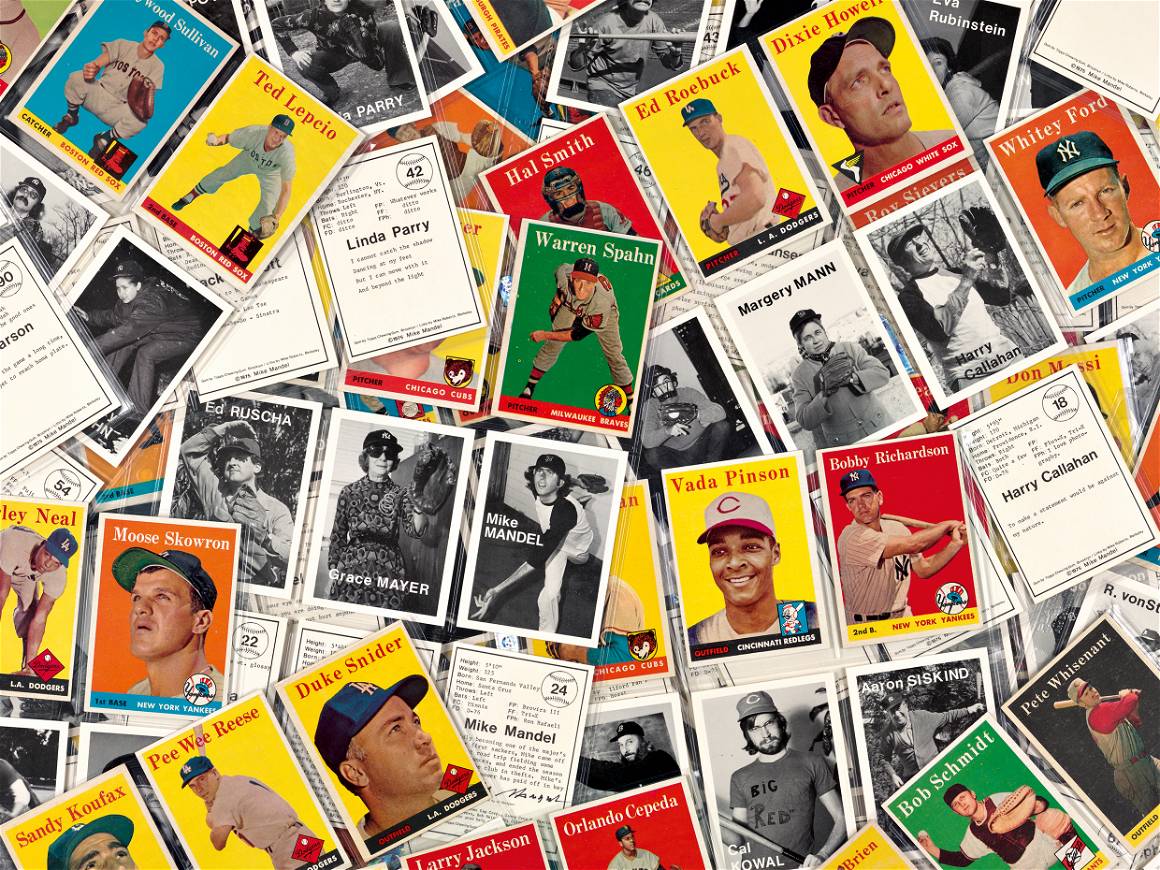Maneuvering through the mounds of 350,000 images scattered throughout the opening hall of C / O Berlin’s current exhibition Send me an Image. From Postcards to Social Media, is perhaps a physical depiction of the Picture Editor’s task here at IMAGO. Our columnist Sofia Bergamnn headed to their exhibitions this week.
Exhibition at C/O Berlin reveals the evolving relationship between society and photography.

But Erik Kessels’ installation 24HRS in Photos, where he printed out all the photos uploaded to the image sharing service Flickr within a 24-hour timeframe about fifteen years ago, shows just a fraction of the influx of images circulating the internet daily today — whether it be on social media or platforms like ours at IMAGO. It is this conceptualization of the circulation of photography, brought forth by Kessel’s installation, which ties this exhibition together bringing one to question the changing purposes of images and the role of selecting agents who curate our content today.
Entering the main exhibition space, we see a collection of old portraits dating back to the mid 1800’s along with postcards which were used up until the late 20th century. These portraits or ‘carte de visite,’ show people in their finest clothes posing in front of lush backdrops, and were sent around as a way to communicate about one’s current life — typically displaying the most pristine version of oneself. A practice mostly reserved for the bourgeoisie, it is reminiscent of today’s influencer and celebrity culture on social media, where idealized lifestyles and appearances, but also our own personal profiles, are used to share a part of our lives. Postcards also embodied a similar purpose which social media takes on today: the circulation of travel photos, short, humorous perhaps superficial or sentimental messages, and even election campaigns. These methods were eventually replaced by the telephone which ironically evolved into the smartphone and social media, a quasi-full-circle in the use of images as a means of communication.
The increase of the internet and the rapid circulation of images throughout, has also impacted the function of platforms like IMAGO. Photos that used to be individually scanned and captioned by the Picture Desk team mostly for German newspapers, are now sent around the clock by photographers and agencies around the world. Automatically uploaded to the database, they serve beyond just local newspapers and are carefully curated by editors.

With the existence of more images comes a greater attention to details and nuances in what the images are saying. What kinds of images should be used to tell what kind of story? What is a good image and for which purpose must it be used? Whether natural disasters, major sports events or elections, wars or religious festivals, historical archives or contemporary creative images, decisions must constantly be made which effectively impact the viewers relationship to what they are seeing in the world. Depending on the angle and purpose, results always vary and this process of curation is made complicated. The installations at C / O Berlin Traces of Exile and Blame the Algorithm, directly touch on this game of image selection and how it impacts society’s view on different subjects.
Traces of Exile is a video installation by Thomas van Houtryve where he gathers images taken from instagram by refugees in different places, mostly selfies, matched against his own images taken in those same places and creates a visual map of these migrations. Simple yet telling, the piece exposes how differently not only specific places but also major global phenomenon’s like migration can be represented with imagery, which ultimately stems from just a person and a camera.
In Blame the Algorithm, Adam Broomberg & Oliver Chanarin — guest editors for the photography magazine Der Greif — collected images that were not seen as appropriate for the issue: either too explicit, political, violent or controversial for different reasons. They also turned to a former Facebook Moderator whose job was to sift through reported content to decide if it was appropriate for social media — everything from pornography, beheadings and domestic violence, to hate crimes and suicide threats. The team categorized a collection of photos as either good or bad for the installation, with the photos displayed on opposite sides of a corridor. The lines start to blur however, as both the cunning and perhaps in some cases offensive as well as extremely sexual or gruesome, can really be seen on both walls. One is left grappling with questions of meaning, morality and social connotations within images — questions faced everyday by image editors.

Marc Lee’s installation Corona TV Bot directly targets the discussion of images for information and the news cycle. A sensory-overload, the installation compiles clips of different television anchors, layered with images and footage from around the world, along with tweets and comments all related to the Covid-19 Pandemic. We see varying approaches within reports and are reminded of the different realities that exist worldwide.
With a daily stream of images entering the Imago database regarding Coronavirus, editors also deal with everything from vaccination centers, foodbanks, emergency wards, mass graves and testing stations in hot spots like India and Brazil, to crowded airports and the reopening of tourism around Europe, or demonstrations opposing vaccinations or calling for rights to healthcare workers. Lee’s installation shows the nuances in decisions made when visualizing global phenomena in the news media, as well as this relationship to media climates and freedom of speech in different countries.
Showing until September 2, Send me an Image: From Postcards to Social Media which was curated by Felix Hoffmann and Dr. Kathrin Schöneggnot, not only takes viewers through the history of photography, but also imagines different ways to actualize the relationship between society and photography — perhaps even broadening one’s perspectives on what an image can mean. Addressing social media, the internet and the daily use of image circulation, viewers are also confronted with their own personal contribution to this discourse. The group exhibition is simple in nature but conceptually relevant and complex, forging questions and themes that are familiar to Imago and its role as a global photography platform.
Sofia Bergmann is the latest columnist for The Game. See her other articles on The Game and featured in our IMAGO Zine Series | ICONS. Get your copy and subscribe to future issues here


